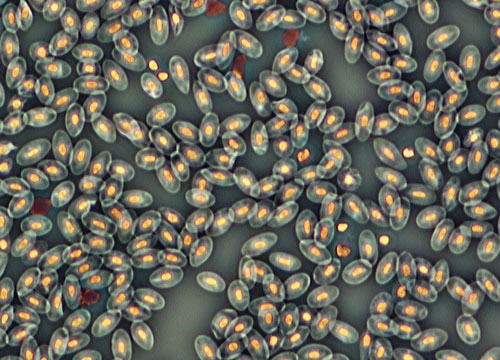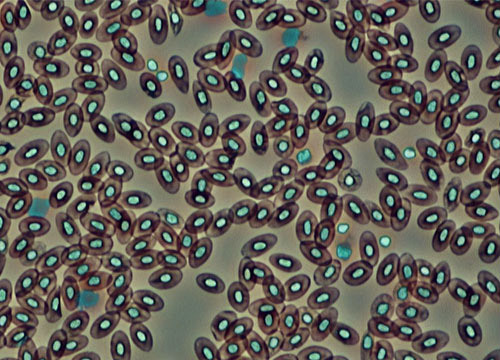Frog Blood Cells
Unlike typical mammalian red blood cells, those from amphibians, such as frogs, contain a DNA-bearing nucleus that is visible in the center of the cell. The circulatory system of amphibians is rather unusual, their hearts having three chambers, two atria, and a single ventricle.
 Negative
Negative
 Positive
Positive
Positive
The design of the amphibian circulatory system is curious because blood accumulates oxygen in the lungs and is then returned to the heart before being pumped into the rest of the circulatory system. Therefore, a mixing between oxygenated and deoxygenated blood occurs as blood returning to the heart from the lungs is mixed with incoming blood from the body. Frogs handle this situation by having a very slow metabolism and by absorbing some oxygen through their skin. In addition, the ventricle does have some directional control over the distribution of the blood.
Negative
The presence of a nucleus in amphibian red blood cells allows researchers easy access to large quantities of amphibian DNA. Frog blood has both a solid and a liquid portion. The liquid plasma carries solid elements such as red and white blood cells. Blood can be collected from frogs and the red blood cells isolated by centrifugation. After removal of the residual plasma, purified cells can be treated with specific enzymes and detergents to digest the cellular envelope and release DNA from its protein complex. The DNA is then useful for scientific studies and experiments.













